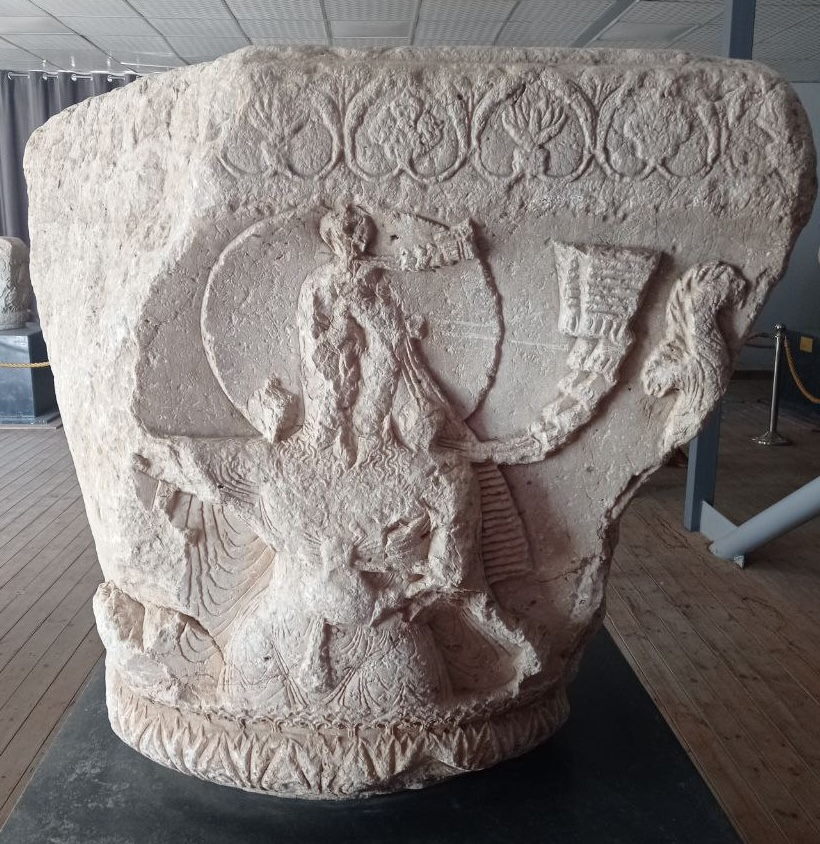#mythologymonday Thread: In 2007 two stelae, each bearing figures of the Storm-god leading a ruler and a duplicate Hieroglyphic Luwian text, were discovered at Uluçinar (formerly Arsuz), on the Turkish coast south of İskenderun... 

The inscription is the work of a Suppiluliuma, son of Manana, king of the land of Walastin, now understood as the Luwian designation of the Amuq plain with its capital at the Iron Age site of Tell Tayinat... 

The stelae, probably dating to the later tenth century BC, record the successful reign of the ruler who "achieved things his father or grandfather could not" like conquer the city of Adana and the land of Hiyawa (most likely Ahhiyawa, the Hittite designation of Greeks) 

All his military victories and the abundance of grain and wine in his kingdom, the king attributes to the mighty Storm god. On both stelae, the king is depicted holding grapes in his right hand and grain in his left, while being led by the hand by the Storm god, his patron deity 

Well here is why: This is a chart showing yearly temperature and precipitation in Eastern Anatolia... 

The late April early May (Taurus) is the time of maximum precipitation and maximum thunderstorms. The time when Thunder god arrives to the land of the Hittites...Hence the bull...This is also start of summer...Hence the winded sun disc...
The inscriptions are from the article "Two new inscribed Storm-god stelae from Arsuz (İskenderun): ARSUZ 1 and 2" by Belkis Dinçol, Ali Dinçol, J.D. Hawkins, Hasan Peker and Aliye Öztan
jstor.org/stable/24878378
jstor.org/stable/24878378
One more thing: In Eastern Anatolian plateau, grain and grape harvest started late jul early Aug. In Leo which marks the end of summer, season symbolised by a bull, and beginning of Autumn, season symbolised by a lion. Lion kills Bull. Killing of the bull = Beginning of Harvest
• • •
Missing some Tweet in this thread? You can try to
force a refresh
























